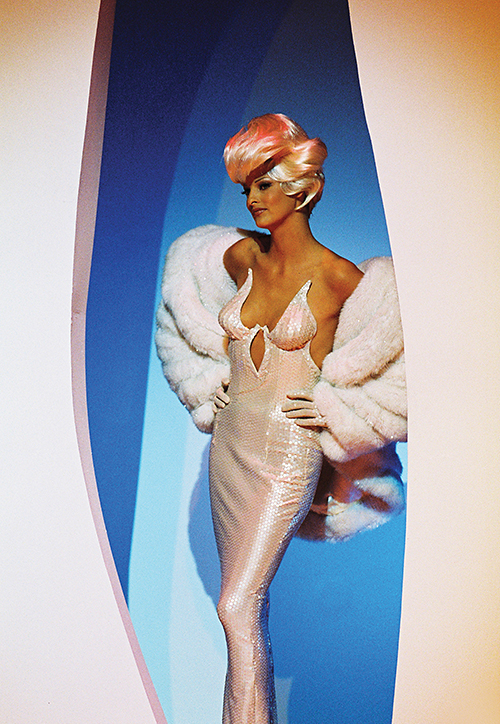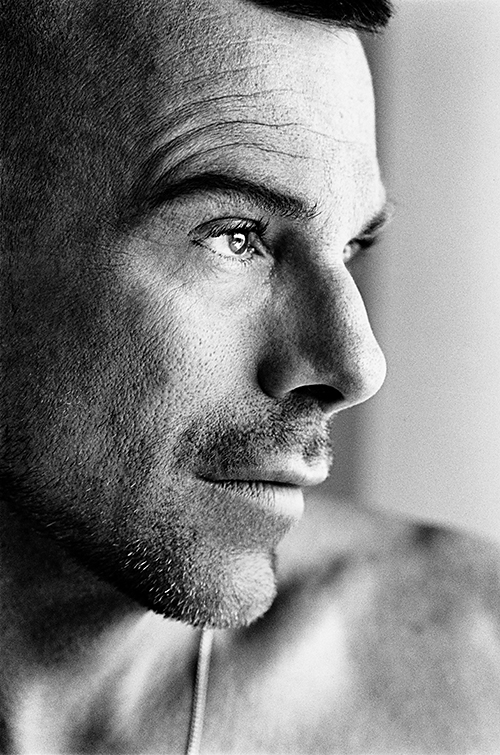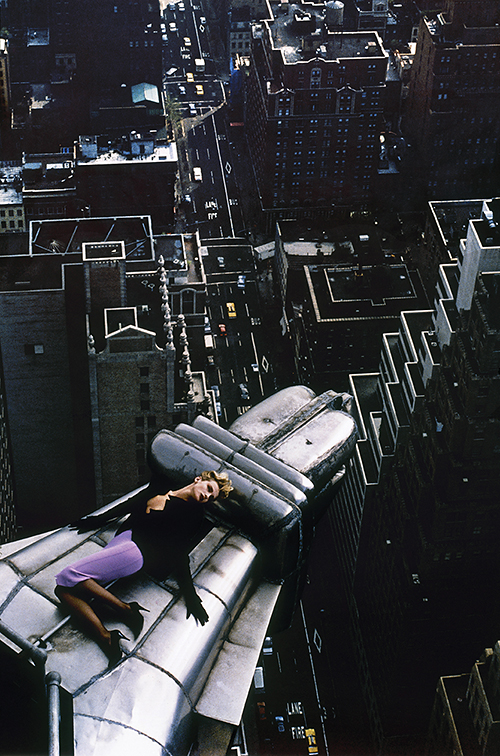Thierry Mugler
Thierry Mugler was one of the fashion industry’s most fanciful and futuristic designers until he decided to step away from the momentum he created and disappear from the spotlight.
Essay by Stefano Tonchi
Now, almost forty years later, I can see that, in a certain sense, I missed the point. As history has confirmed, Mugler was never really IN or OUT of fashion. Through the multiple twists and turns of his long career he always inhabited his own space, a territory between fashion and theater, between elitism and mass appeal, between tradition and transgression. He combined the structure and order of the golden 1980s with the wild freedoms of the 1970s, endorsing a mix of high and low culture in which haute couture refinement met drag-show drama. This merging of fashion and pop culture, this idea of clothing as spectacle, not only earn his work a place in the canon but also make it absolutely relevant to every new generation of designers. John Galliano, Alexander McQueen and Hedi Slimane all owe him something, and we cannot imagine the contemporary convergence of fashion and entertainment without his example.

Mugler’s roots as a designer grew straight out of the late 1960s’ youthquake, but his fashion is also a conservative reaction to that wild and unrestrained cultural moment. His return to classic tailoring and love of structured silhouettes are the response of a young man from the Gothic city of Strasbourg, trained in the highly disciplined realm of classical dance, to a world of hippie free spirits in flowery flou dresses. But the rigor of his shapes and the perfect geometry of his lines hide a daring and transgressive message.

From the start, Mugler was interested in establishing more than just a design studio where age-old couture techniques were rediscovered, studied and practiced. Inspired by the Wiener Werkstatte and the Arts & Crafts movement, he wanted to run a true atelier, where innovation and research held equal weight with tradition. The clothes that came out of that atelier tell a story of experimentation and seeking, success and mistakes, incredible craftsmanship alongside cheap glitter-and-glue tricks: there’s an evening gown in skin-tone rubber lace; a fire-red, pythonesque vinyl bodysuit; a ridiculously heavy metal bustier; a lacquered faux-fur headpiece; a bra with motorcycle handlebars attached. He tapped the genius of collaborators from all over the world and from wildly disparate disciplines – car painters and leather artisans, print technicians and photographers, scientists and artists, the brilliant corset maker Mr. Pearl and the futuristic sculptor Jean-Jacques Urcun. The Mugler atelier was a Kubla Khan palace, a kingdom of stars and dust.
